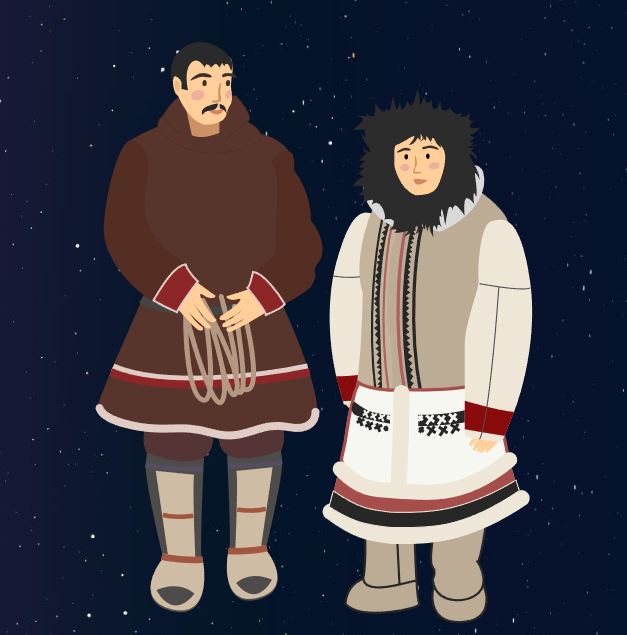Tucked away in the vast expanses of the Russian North, Siberia, and the Far East lies a rich tapestry of cultures, languages, and traditions.
These are the indigenous peoples – the Sami, Vepsians, Nenets, Khanty, Muncie, Selkups, Nganasans, Enets, Chulymtsy, Teleuts, Shors, Kumandins, Tubalars, Telengits, Dolgans, Evenks, Tofalar, Todzhintsy, Nanai people, Udege people, Basins, Nivkhi, Ulchi, Orochi, Yukaghirs, Koryaks, Alyutorians, Aleuts, Chukchi, and Eskimos.
The Interactive Atlas of Indigenous Peoples of the North, Siberia, and the Far East celebrates their diverse cultural heritage. It is not just a mere compilation of facts and figures; it's a vibrant portal that unveils rich historical, cultural, socio-anthropological, and linguistic diversity through informative, interactive maps, pictures, texts and beautiful drawings of indigenous costumes.
Embark on a digital journey that reveals the beauty of their traditional costumes and habitats, the enchantment of their national folklore, and the intricacies of their languages. The atlas gives historical background, a description of the natural environment, lifestyle and life support system, demographics, social situation and problems, food culture, spiritual culture, and contemporary cultural creativity.
Who are these indigenous peoples? They are the guardians of traditions and the bearers of extraordinary resilience. These are communities of less than 50,000 residing in the northern reaches of Russia, Siberia, and the Russian Far East.
In today's fast-paced world, where cultures and languages often risk being swallowed by globalization, the Interactive Atlas serves as a preservation and information gateway. It is built on the principles of technological sovereignty, ensuring that these narratives are not only preserved but also celebrated. It is a testament to the collective effort to safeguard cultural diversity in the northern and Arctic territories.
With every click and scroll, the viewer dives deep into the captivating world of indigenous peoples. Exploring their languages, which are more than just a means of communication; they are the vessels through which ancient tales and traditions are passed down from one generation to the next. Unravel the threads of their culture by seeing their diverse costumes, beautifully interwoven with the breathtaking landscapes they call home.
The Interactive Atlas is more than a digital resource; it is a call to action to preserve indigenous cultures, languages, and traditions.
The Atlas was formally opened on Friday, 27 October 2023, and made by the Russian Humanitarian University in Moscow. The portal is currently only in Russian but it is possible to get an automatic English translation that works quite well.
Source and pictures: Interactive Atlas of Indigenous Peoples of the North, Siberia and the Far East: Languages and Cultures
Related news
The Arctic Council and the Crucial Partnership Between Indigenous Peoples and States in the Arctic
The White-Wiphala Paper on Indigenous Peoples' food systems - FAO
The tags below provide an opportunity to view previously posted related news within the selected category



